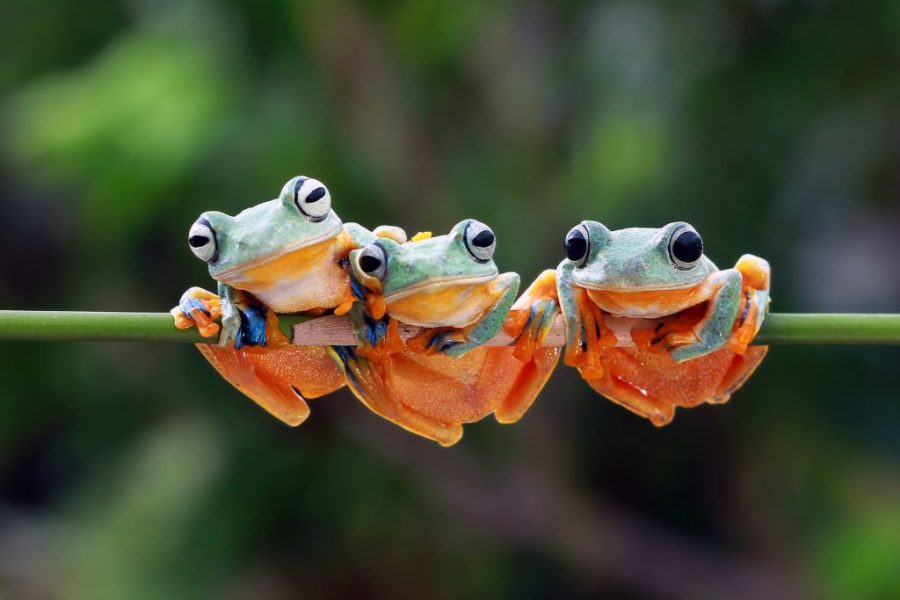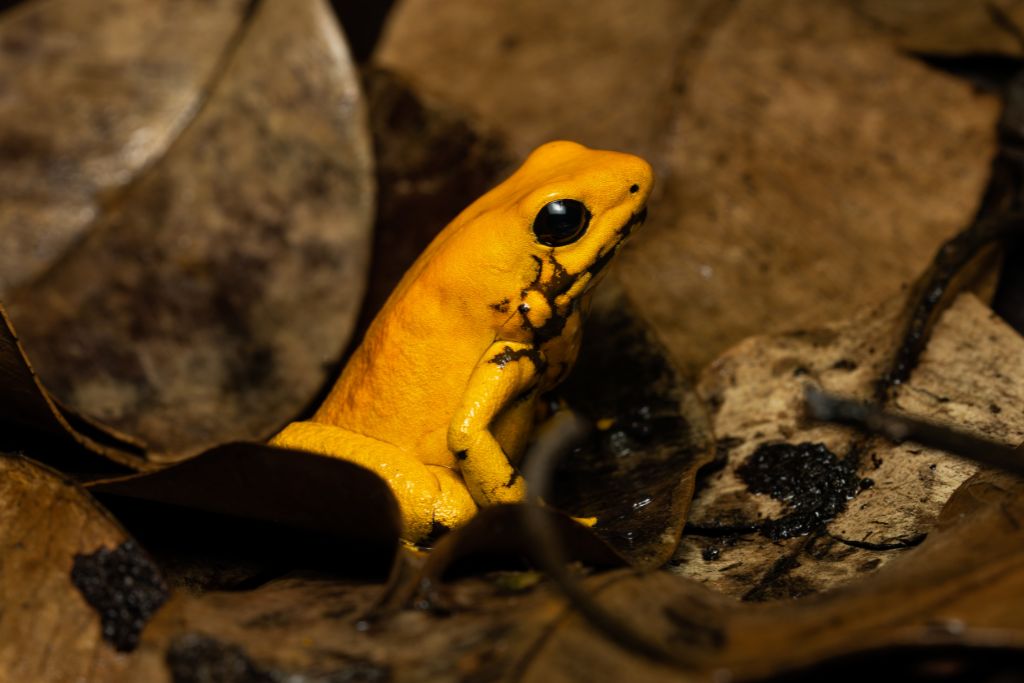
In Panama, golden frogs used to be a common sight in its wet rainforests. 20 years ago, a walk along a forest stream could bring you face to face with many of these tiny yellow frogs, a national symbol in the country. Then, they started to disappear. Alarmingly, other frog species began vanishing all around the world, from the French Pyrenees to the Wet Tropics in Australia. Today, the Panamanian Golden Frog is almost extinct in the wild, and over half of all frog species in the world are expected to meet the same fate in the next century. Why are frogs endangered and what can we do to save them?
—
Frogs belong to a class of animals called amphibians, which are older than dinosaurs. The first amphibian crawled out of the water around 365 million years ago. Frogs are surprisingly diverse – over 7,000 species have been identified. There are frogs that live in the desert, frogs that can fly or glide across trees, and frogs that carry their eggs on their backs.
Frogs and other amphibians are known as indicator species. Because they are extremely sensitive to changes in the environment, they can tell us a lot about the health of the ecosystem. When frog populations are in trouble, it is a warning that the entire ecosystem is in danger.
Frogs are also keystone species, which are species that holds the ecosystem together. In the food chain, frogs play the roles of both predator and prey. They are a great pest controller as they feed on insects such as mosquitoes and flies. In turn, they provide food for bigger animals like birds and reptiles.
Today, frogs face multiple threats – disease, habitat loss, and pollution. The Chytrid fungus, one of the most damaging diseases to threaten biodiversity, is deadly to many species of frogs. The fungus attacks their skin, an important organ that they use to drink and breathe and eventually, it causes their hearts to fail. A 2019 study found that the disease has caused the decline of at least 500 amphibian species. Of these, more than 200 species are now extinct or almost extinct.

The International Union for Conservation of Nature’s Red List of Threatened Species classifies the Panamanian golden frog as ‘critically endangered’.
Humans also damage frog habitat in many ways. For example, we clear large areas of rainforests to make way for agriculture and housing. Human activity such as mining and farming often releases harmful chemicals, which find its way into streams and lakes where frogs live.
We can help frogs by keeping their habitats healthy. To do so, we can push for laws that protect our local wetlands and forests. We should also stop using pesticides in our backyards, which can flow into frog habitats through runoff. We may also stop eating frog legs, which are considered a delicacy in many parts of the world, including France, China, and Spain. It is estimated that millions of frogs are eaten each year.
Check this out next: 6 of the World’s Most Endangered Birds